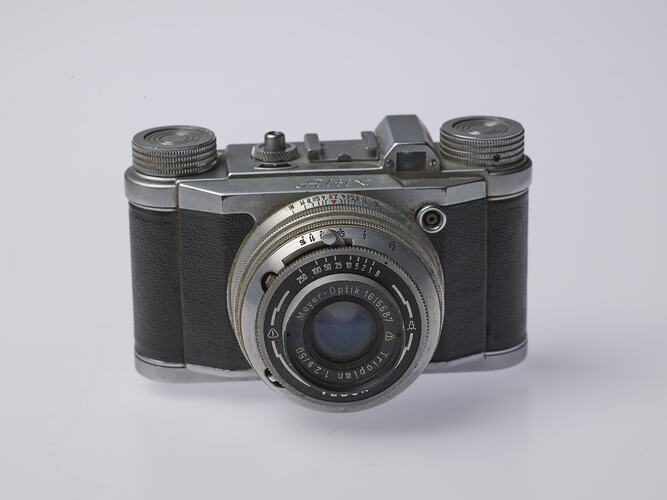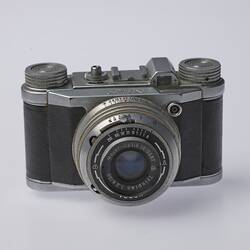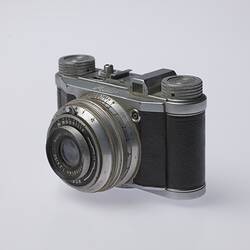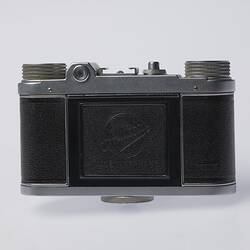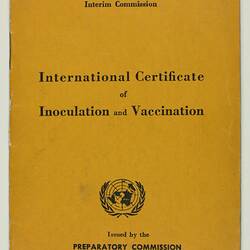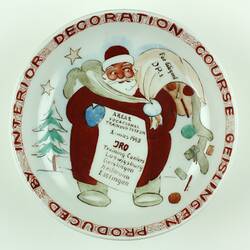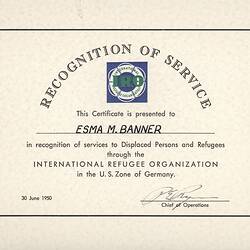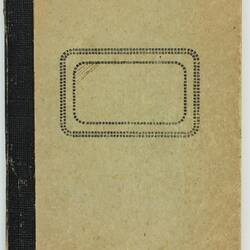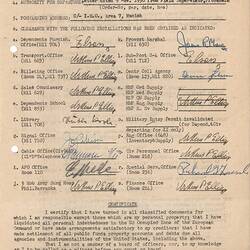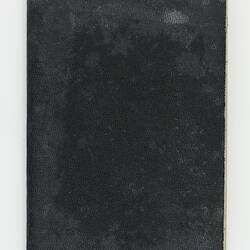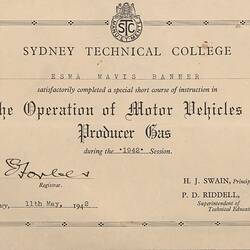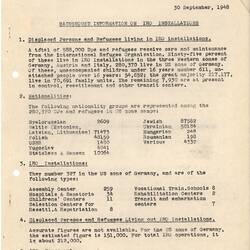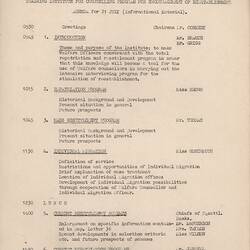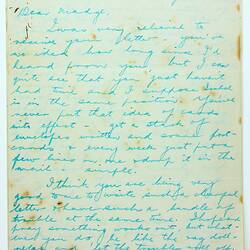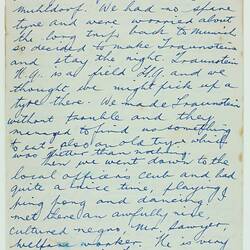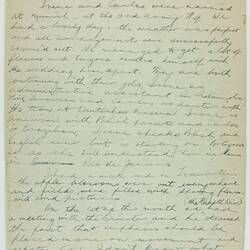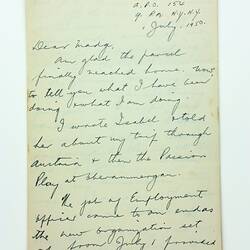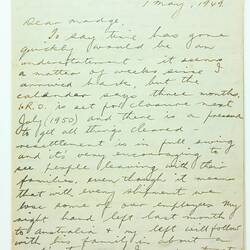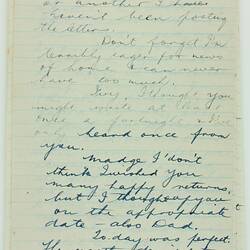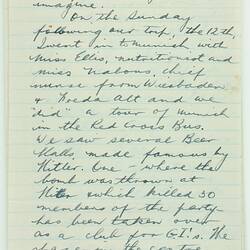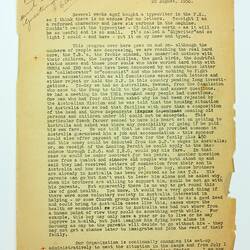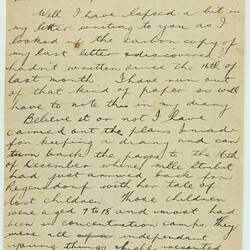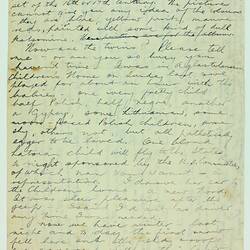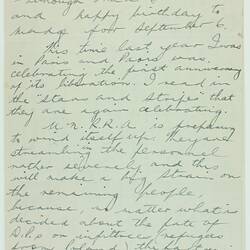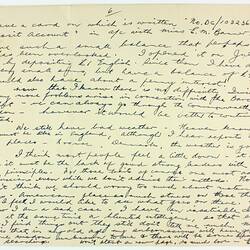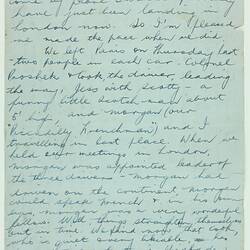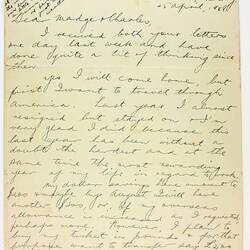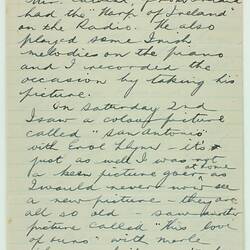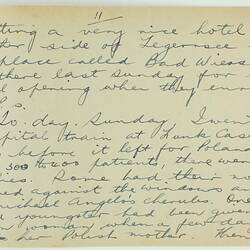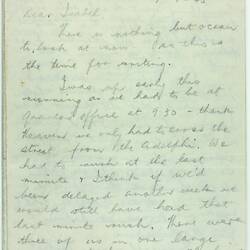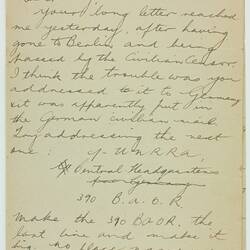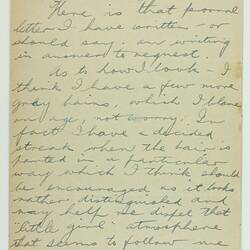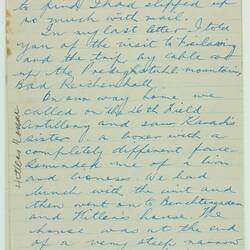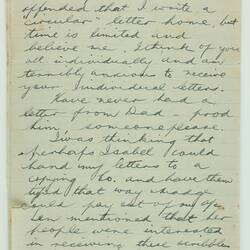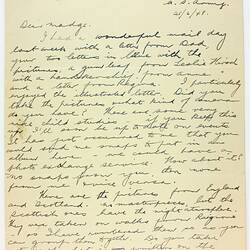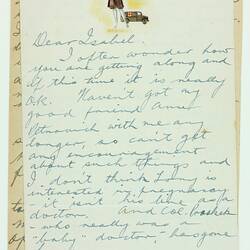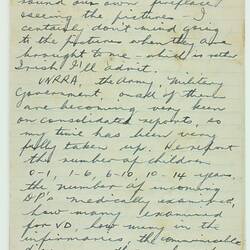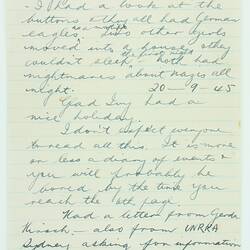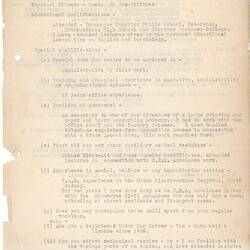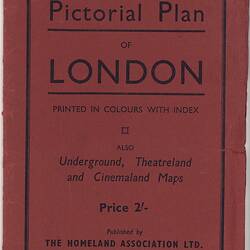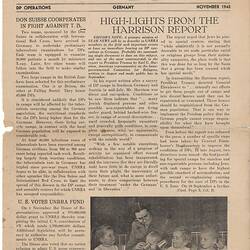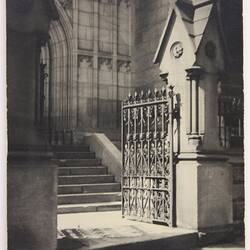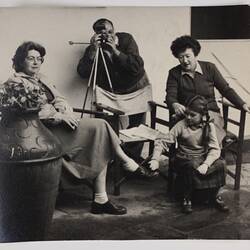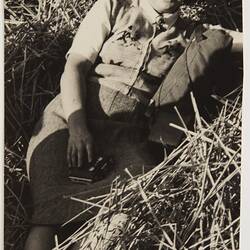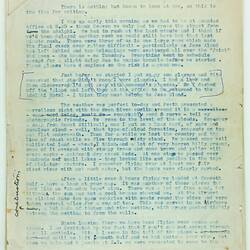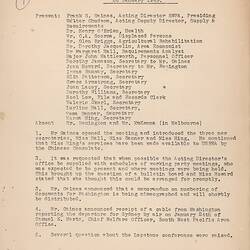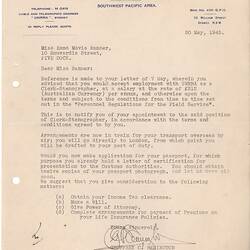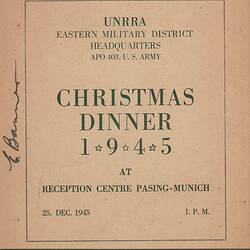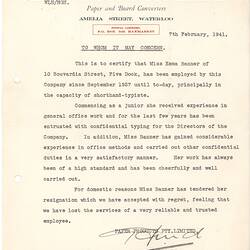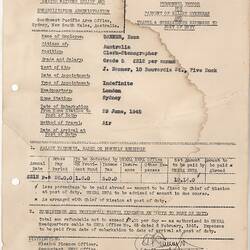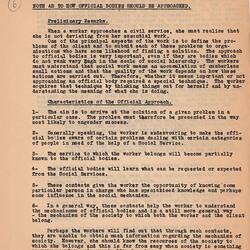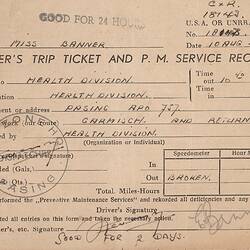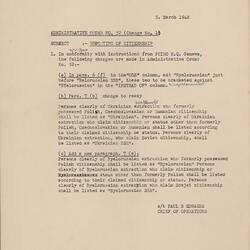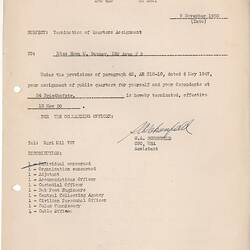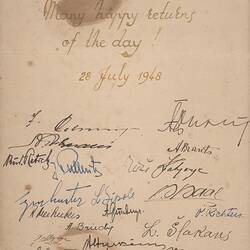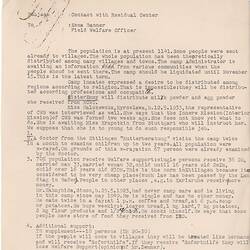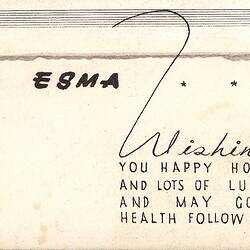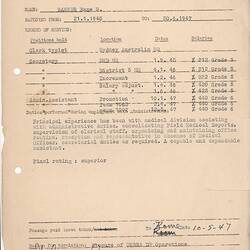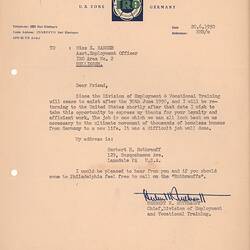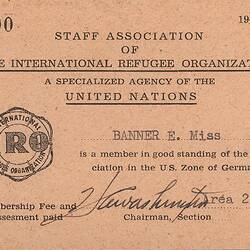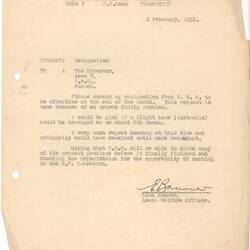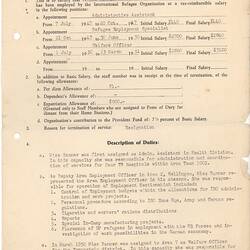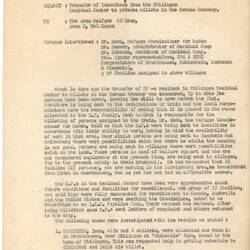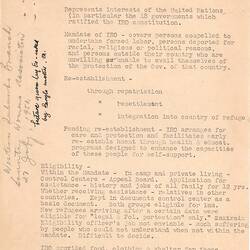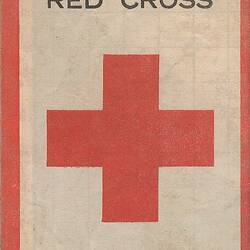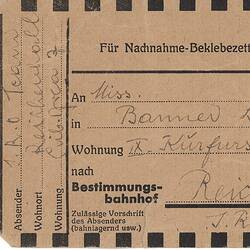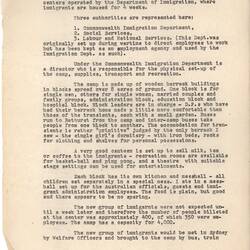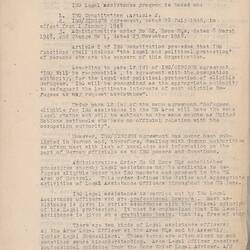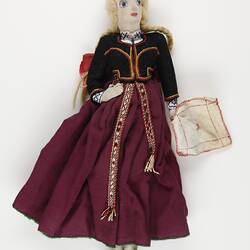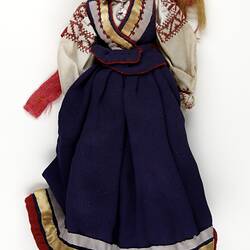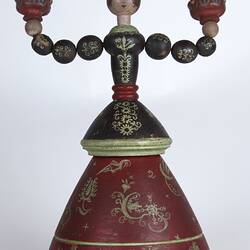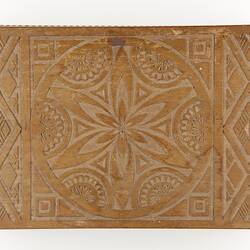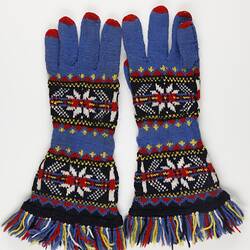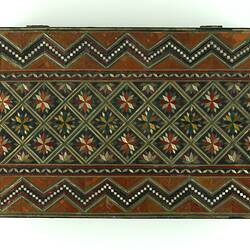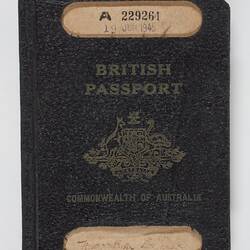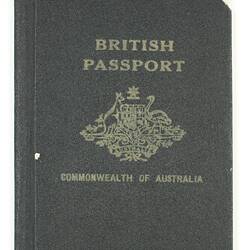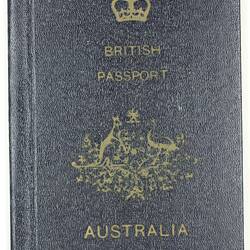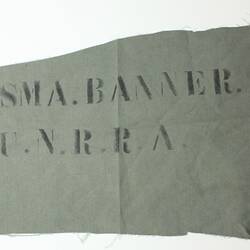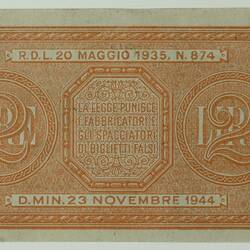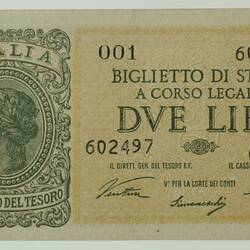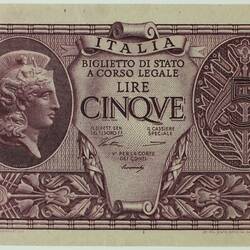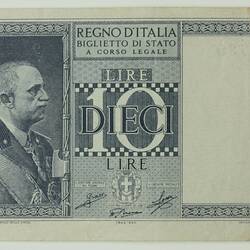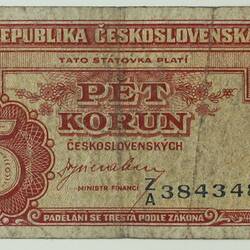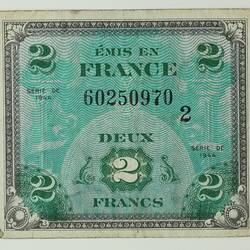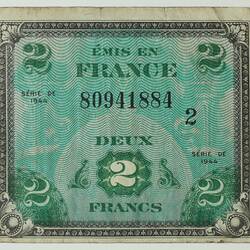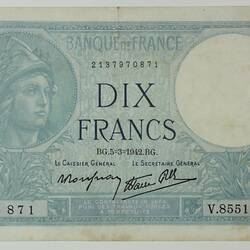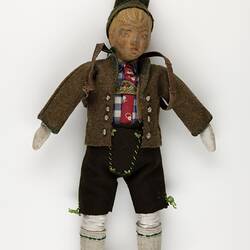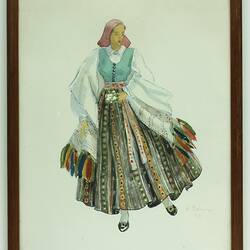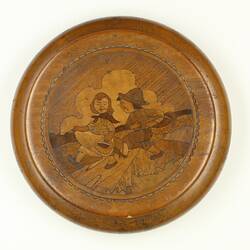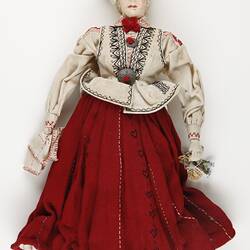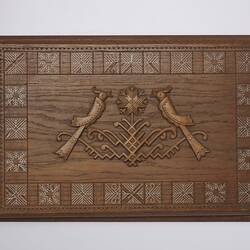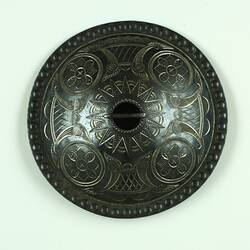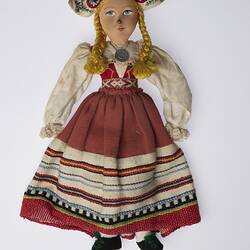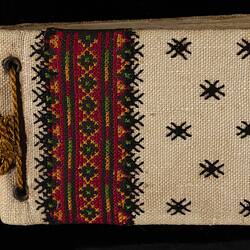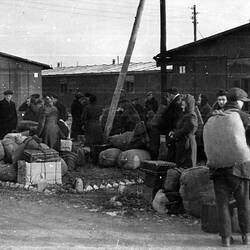Summary
Single lens reflex camera with leather case that belonged to UN World War II displaced persons camp worker Esma Banner. Esma was a keen photographer throughout her life, and while in Germany, she took numerous photographs and slides that recorded her experiences. This camera dates from after her return to Australia. Museums Victoria also holds an album of photographs [HT 32690] which were taken by Esma using this camera.
Esma Banner worked in displaced persons' camps in the US Zone of Germany after World War II as an employment and welfare officer for the United Nations Relief and Rehabilitation Administration (UNRRA) and the International Refugee Organization (IRO), from 1945 to 1951. Esma was one of 39 Australians who went to Germany to assist with post-war repatriation and re-settlement of refugees displaced by the war. More than 1000 displaced persons' camps were established by the Allied Forces. Initially created as temporary processing centres, the camps became longer term sites of accommodation, employment, education and recreation for refugees who could not, or did not want to, be repatriated to their countries of origin.
Physical Description
Altissa brand 35mm metal and plastic SLR camera. Serial number 94507 is printed on the inside and the name 'Altix' is stamped on the back. The number '12/2036' is also stamped on the back. Camera is made in Dresden, Germany. Lens is 'Vebur' brand with 'Meyer Optic 1615687' written on front. Camera is attached to worn brown leather case with shoulder strap by screw at base. Lens cap and front cover of case are missing.
Significance
The Esma Banner World War II UN Worker Collection is an extensive and diverse collection of objects, documents, photographs and archival material which explores the experiences of an Australian woman working for the United Nations assisting in the relief and rehabilitation of millions of displaced people in Europe after World War II. Esma Banner served with the United Nations Relief and Rehabilitation Administration (UNRRA) and later with the International Refugee Organization (IRO) at displaced persons' camps in Germany from 1946 to 1951. She was one of fewer than 40 Australians employed by UNRRA and IRO during this period.
This collection recounts the often untold story of immigration from the perspective of a migration worker and enables the documentation of many themes relating to post World War II migration including life in the displaced person camps, international refugee management, creativity and cultural maintenance, and the political complexities of post-war resettlement. Of particular note are the craft items created by refugees living in displaced persons' camps. This collection holds a variety of men's and women's work, thus providing a significant insight into life within the camps. These objects also serve as valuable examples of cultural practices and traditional skills.
This collection and accompanying documentation presents a unique perspective of the post-World War II relief effort. Esma's diaries and letters in particular offer her personal insights and observations and demonstrate how civilians contributed to the reconstruction effort in Europe. In addition, these items add to the emerging collections of material describing women's involvements during times of conflict, as well as the larger narratives that illustrate Australia's wartime experience. After World War II hundreds of thousands of homeless, stateless or displaced people lived in camps before resettling in Western countries including Australia. This collection retains ongoing cultural relevance to these large migrant communities across Victoria and Australia. With the population of post-war displaced persons' survivors aging, the collection contributes to preserve their stories and experiences as part of a greater Australian migration narrative.
More Information
-
Collection Names
-
Collecting Areas
Images & Image Making, Leisure, Migration & Cultural Diversity
-
Acquisition Information
Donation from Helen Fitzgerald, 14 Aug 2012
-
Original Owner
Ms Esma Banner, Sydney, New South Wales, Australia, circa 1960s
-
Inscriptions
Inside: '94507' Reverse: 'Altix/12/2036' Lens: 'Vebur/Meyer Optic 1615687'
-
Brand Names
-
Classification
-
Category
-
Discipline
-
Type of item
-
Overall Dimensions
127 mm (Length), 72 mm (Width), 88 mm (Height)
Overall Dimensions (with case)
-
Keywords
Photographic Equipment, Photography, Recreation Activities, Recreation, Cameras, Camera Cases, Camera Clubs, Photographic Lenses, Refugees
